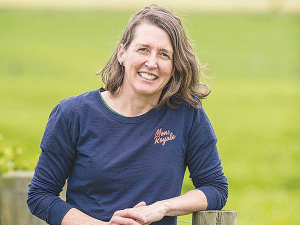GHG emissions up 1.7%
As farmers and tractors took to New Zealand’s motorways, towns and cities to protest the pricing of agricultural emissions, Stats NZ released the country’s quarterly greenhouse gas emissions figures.
 Kelly Forster says by knowing their numbers means farmers are in a position to decide how to make changes.
Kelly Forster says by knowing their numbers means farmers are in a position to decide how to make changes.
Two new information sources to help farmers understand their agricultural greenhouse gas emissions are now available.
Developed under the auspices of He Waka Eke Noa: The Primary Sector Climate Action Partnership, the two resources are the Farm Planning Guidance for Greenhouse Gases and a report on the current tools and calculators that can be used.
Kelly Forster, programme director for He Waka Eke Noa, says knowing a farm's nitrous oxide and methane numbers is the first step towards managing - and knowing how to reduce - on-farm emissions.
"The message is, know your numbers and have a plan."
By the end of 2022, all NZ farms will need to know their greenhouse gas numbers.
"There are now a range of tools that have been assessed as suitable for calculating a farm's biological greenhouse gases, and more are in development and will be assessed soon," Forster explains.
"Measurement is key," Forster explains. "Farmers knowing their numbers mean they are in a position to decide how to make changes to their farming practices to mitigate or reduce emissions."
She adds that every farm is different and not every farmer is expected to reduce their farm's emissions.
"However, the choices each farmer makes to optimise their operation will have a collective impact on NZ's climate change efforts."
Farmers need to know their numbers by the end of 2022 if they farm 80ha or more or have a dairy supply number - or are a cattle feedlot as defined in freshwater policy.
Since December last year, when the first Farm Planning Guidance was released, industry bodies have been incorporating information relevant to their levy payers into their Farm Environment Plans.
The guidance sets out basic principles to guide farmers, growers, and advisors, with practical information on greenhouse gas emissions and to capture carbon.
Help Available
So far, seven different greenhouse gas calculation methods have been assessed and classified: HortNZ, MfE, Alltech, E2M, Fonterra/AIM, Farmax and Overseer.
Meanwhile, other tools are in development and will be assessed and added to the list.
"All farmers knowing their numbers by December 2022 is an ambitious target," says Forster.
She adds that the He Waka Eke Noa's partners are committed to supporting their farmers - including developing new calculators to support farmers across sectors to know their GHG footprint and how to reduce it.
Forster encourages farmers wanting advice to talk to their industry representative, supply company, or other advisors, about knowing their numbers and incorporating GHG into Farm Environment Plans.
As New Zealand marks International Day of Rural Women today, women from across the horticulture sector are calling attention to the crucial role they play in building a more sustainable, inclusive and climate-resilient industry.
Listed rural trader PGG Wrightson chair Garry Moore and his deputy Sarah Brown have been voted out by shareholders.
It was love that first led Leah Prankerd to dairying.
DairyNZ has appointed Dr Jenny Jago to a newly created leadership team role - science partnerships & impact advisor - as part of a strategic refresh of the organisation's science leadership.
OPINION: Public pressure has led to Canterbury Police rightly rolling back its proposed restructure that would have seen several rural police stations closed in favour of centralised hubs.
When I interview Rachel Cox, she is driving - on her way to her next meeting.